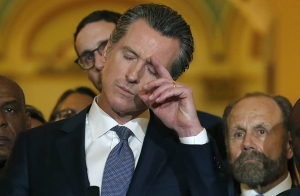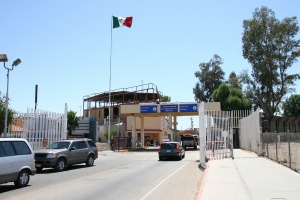Susan Miller
DOJ gave Newsom stern warning over church closings. “Simply put, there is no pandemic exception to the U.S. Constitution and its Bill of Rights,”
Darrell Issa and Judicial Watch filed a lawsuit against Newsom for his all vote by mail order for Nov. election.
Americanism – Let’s Celebrate Being Americans…2,000 different ways!
In 1870, Congress set aside four days of celebration, officially giving federal employees time off. Those holidays were New Year’s Day, Independence Day, Thanksgiving, and Christmas. Since Americans love to celebrate life, and capitalism loves to find a way to create wealth, the list has steadily grown to include 10 major (government-closed) Holidays…and thousands of others. The Federal Holidays have obvious reasons for celebration, but where do all of the other crazy holidays that you hear about come from?
A quick study of various lists reveals there are 17 additional major days of Observance (e.g. Valentines Day, Mother’s Day), over 140 special interest days (e.g. Groundhog Day), 90+ Historical Holidays, and….well…around 2,000 ‘other’ holidays that fill the official list.
Categories from the ‘anything goes’ list include just about every aspect of life experience. A quick preview of a single day from https://NationalDayCalendar.com/
shows six reasons to celebrate on May 20th; Emergency Medical Services for Children Day; Quiche Lorraine Day; National Pick Strawberries Day, Be a Millionaire Day, Juice Slush Day, and Rescue Dog Day. Like I said…anything goes.
Perhaps the most notable back-story surrounding the Holiday frenzy is Mother’s day. It was brought to National prominence in the early 1900’s by Ann Jarvis. She turned its promotion into a lifelong mission (and struggle). She became very protective of ‘her’ holiday, even signing all of her personal letters as…”Ann Jarvis, Founder of Mother’s Day” and continuing to fight any inkling of creeping commercialism. She literally considered Mother’s Day her own intellectual and legal property, spawning dozens of lawsuits fighting the holiday’s commercialism. A 1944 Newsweek article reported that she had 33 simultaneous lawsuits.
A prime example of her battle was the White Carnation. It was her Mother’s favorite flower, so Anna declared it the ‘official’ flower of Mother’s Day. Jarvis noted, “The Carnation does not drop its petals, but hugs them to its heart as it dies, and so, too, mothers hug their children to their hearts, their mother love never dying.” When it became apparent that Carnations had become a cottage industry as a favored gift for Mother’s Day, she officially dropped them as the emblem and adopted a printed button instead.
Her mission to create an everlasting holiday continued its descent into a battle against the inevitable. The commercial juggernaut chipped away at her sacred day. Spoiler alert; she lost the battle. Mother’s Day is currently a 23 Billion per year cash cow.
Anyone can now create a Holiday, and for just about any reason. Create one yourself right now. Just go to https://www.NationalDayArchives.com/application/
….and…of course, pay a small fee. Federal holidays require an act of Congress. But a President can issue an executive order for a one-time holiday any time he wants. Any votes out there for a national ‘End of COVID Lockdown’ day? Let’s celebrate!
Americanism – Meet Typhoid Mary…and then please wash your hands.
Everyone knows the story of Tokyo Rose, the infamous broadcaster who did her best to wreak psychological havoc on the Pacific troops of World War II. But 40 years before she arrived on the scene, another feminine anti-hero entered the psyche of Americans everywhere.
Mary Mallon had emigrated from Ireland to the US in the 1890’s, and got a job as a cook for a wealthy New York banker. In about a week’s time, 6 of the 11 household members came down with Typhoid, which had a mortality rate of 10%.
Mary moved from house to house as a cook, infecting each of the families she worked with, leaving a string of sickness and death in her trail. But she wasn’t connecting the dots. She felt fine, being our Nation’s first discovery of what was then called a ‘healthy carrier.”
It took a detective named George Soper, hired by one of the families, to sleuth out the true root cause of the mysterious string of illnesses. Soper had previously been hired by the government to investigate outbreaks, earning him the title of ‘epidemic fighter.’ He quickly recognized Mary as a common thread. He stalked Mary in Manhattan, repeatedly trying to obtain samples of her feces, urine and blood. She refused, and kept chasing him away (one time with a carving knife in hand).
Soper’s tenacity would end up showing America how a single unwitting carrier could be the base cause of widespread disease outbreaks. He found a trail of 22 people that were directly infected by Mary, some of whom died. She was eventually arrested, forced to give stool samples, and was found to test positive for Salmonella, the root cause of Typhoid Fever. She was quarantined against her will, but successfully sued for release, and ended up cooking again in public kitchens, continuing to spread the deadly disease. By some estimates, Mary was ultimately responsible for about 3,000 cases of Typhoid. Mary still refused to believe she was a carrier and was placed back in quarantine for over 20 years, imprisoned until her death.
She became stigmatized with a name that would ring throughout the next century. “Typhoid Mary” became the butt of jokes, cartoons, and public ridicule. “Typhoid Mary” even appeared in medical dictionaries, as a disease carrier. It also became an oft-used term for anyone who brings bad luck, male or female, as in; “That guy is such a typhoid Mary; everything has gone wrong since he showed up.”
Way back when, there was no talk of total societal shutdown as pandemics loomed and diseases seemed to run rampant. It was just dealt with as part of life and we all lived with the fact that polio, scarlet fever, measles, etc., could take their toll on us and our loved ones.
It takes a great leader to safely guide a country and its people through dangerous times. We’re covered in that regard! It also takes common sense. You’re probably sick of hearing it, but the most basic preventative measure would have made a big difference 100 years ago. If Typhoid Mary had simply washed her hands several times a day, lives would have been saved. Stay safe!
In the Heritage Foundation’s “The Trouble with Nationalism,” Kim Holmes explains that unlike nationalism based on cultural identity, “American exceptionalism…is grounded in America's founding principles: natural law, liberty, limited government, individual rights, the checks and balances of government, popular sovereignty…[and] the civilizing role of religion in civil society … We as Americans believe these principles are right and true for all peoples… Americans are different because our creed is both universal and exceptional at the same time. We are exceptional in the unique way we apply our universal principles.”
So as the internet and future technologies expose American values to the world over time, strong borders protect our culture, in addition to protecting our health and economy. By bolstering this protection with exclusivity, we incentivize those who admire us to adopt our ways, whether they become citizens or spread the word in their home land.
Convicted criminals let out of jail, making room for arrested restaurateurs, hairstylists, barbers, joggers, beachgoers and surfers.










